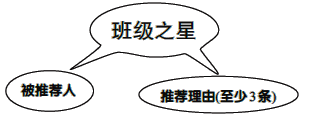题目内容
(2017· 重庆A卷·37)—Excuse me,could you please tell me ________ the Science Museum?
—Sure. Go along the street and turn left. It's next to Bank of China.
A. when I can get to B. when can I get to
C. how I can get to D. how can I get to
There are some very good things about open education. This way of teaching allows the students to develop their own interests in many subjects. Open education allows students to be responsible(负责) for their own education. Some students do badly in traditional classrooms. The open classroom may allow them to enjoy learning. Some students will be happier in an open education school. They will not have to worry about grades or rules. But many students will not do well in an open classroom.
For some students, there are too few rules. These students will do little in school. They will not make good use of open education. Because open education is so different from traditional education, these students may have a problem of getting used to making so many choices. For many students it is important to have some rules in the classroom. They worry about the rules even when there are no rules. Even a few rules will help this kind of students. The last point about open education is that some traditional teachers do not like it. Many teachers do not believe in open education. Teachers who want to have an open classroom may have many problems at their school.
You now know what open education is. Some of its good points and bad points have been explained. You may have your own opinion about open education. The writer thinks that open education is a good idea, but only in theory(理论). The writer believes that most students, but of course not all students, want some structure in their classes. They want and need to have some rules. In some cases, they must be made to study some subjects. Most of the students are pleased to find subjects they have to study interesting. They would not study those subjects if they did not have to.
Open Education
Topic | Open education is a way of teaching which allows students to become1.in many subjects. |
Advantages | Open education allows students to be responsible for their own education. In open classrooms, many students don’t need to worry about grades or rules. Some students find more2.in open classrooms compared with traditional classroom. |
Disadvantages | Many students cannot3.themselves as well in open classrooms as in traditional classrooms. There are so many choices for students to make that they can’t use open education well. Some teachers are4.such a way of teaching. |
The writer’s opinion | Open education may not5.very well in a real class or school. Most of the students want some structure in their classes. |


